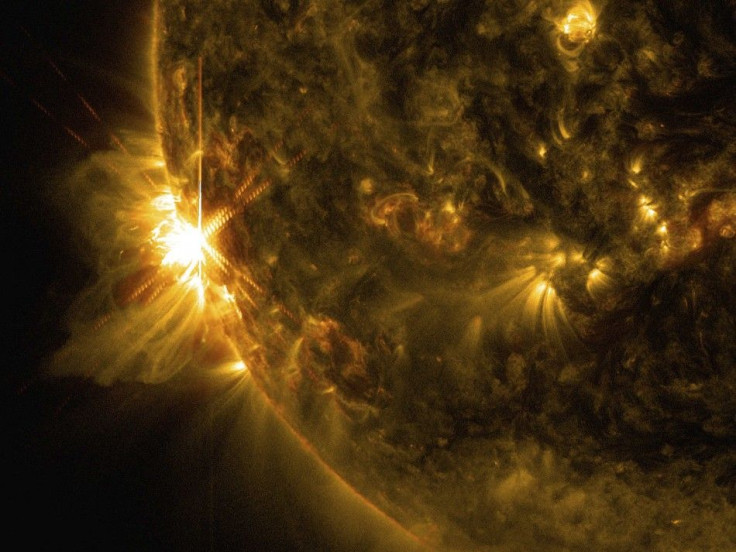Images Of Solar Flare Captured By NASA [Watch Video]

Images of a mid-level solar flare were captured on Aug 24 by the US space agency National Aeronautic and Space Administration's Solar Dynamics Observatory.
The half dozen solar flares have been constant on Aug 25 and 26 as well. The sun emitted a solar flare that erupted on its left side, which was then followed by many more flares. The event was captured with the help of a wavelength of extreme ultraviolet light which is necessary for observing the flares perfectly, reported Silicon Republic.
NASA said that at 8.16 am.EDT(1216 GMT), the flare, reached its peak from an active sunspot known as AR2151. The flares, powerful bursts of radiation, were on the left side of the sun. The flares contain harmful radiations but cannot pass through the atmosphere of the Earth, hence avoiding physical effect on the humans. In the last few days, the sun has been going through increased activity which has led to the solar flares.
NASA added that in case that the flares are intense, layers through which GPS and communications signal travel could be disturbed. Two of the solar flares have been classified as M5, a mid-level eruption. The one on Aug 24 has been classified as M5.6 solar eruption.
The M-class flares have one-tenth of the power of the most intense flares, which come under the class X-flares, said a spokeswoman from NASA, Karen Fox. The other flares had an intensity less than the M5.
The sunspot was not facing the Earth at the time of peak flaring, but then it is definitely a spot to watch out for, according to the Huffington Post.
Spaceweather.com wrote on its Web site that the sunspot will be facing Earth in the next few days which increases the chances for geo-effective solar activity.
When the sunspot faces the Earth, the M-class solar flares can cause aurora views for observers at high altitudes which is due to the amplification of the northern lights displayed. When the X-flares are directed to Earth, it can pose danger to astronauts and affect satellite communications as well as navigation systems.
Youtube/ BBC News





















